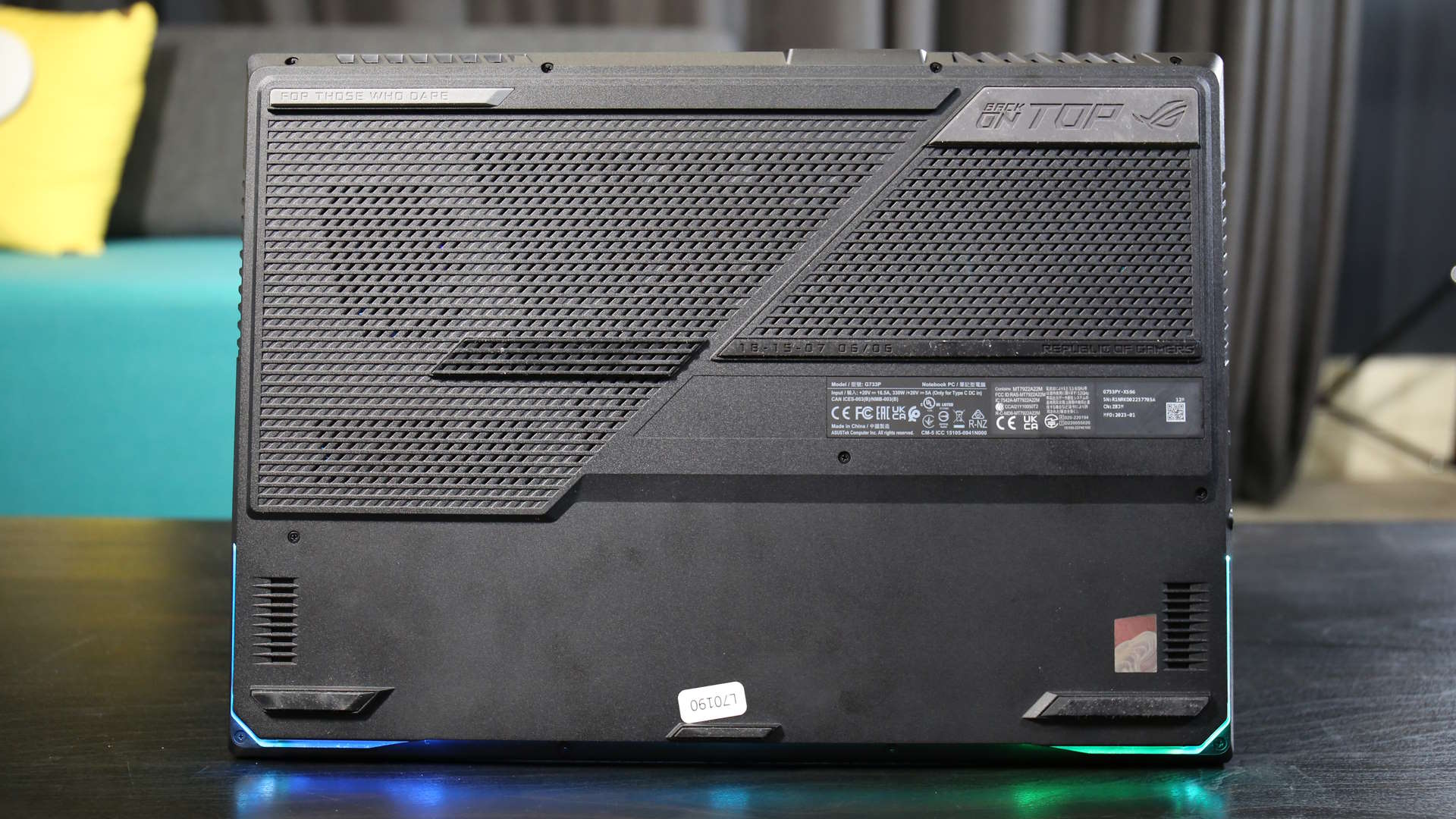Our Verdict
The Scar 17 is one of the fastest, most powerful gaming laptops I've ever tested. And if that's all you care about this is the machine for you. For me, the ergonomics make it feel like a second-tier system despite the fact it can outperform far more expensive gaming laptops. Asus giveth, and Asus taketh away.
For
- That new AMD CPU is a star
- RTX 4090 can flex its gaming muscles
- Relatively slim chassis for a 17-incher
- More affordable than equivalent specs
Against
- Poor ergonomics
- Terrible trackpad
- Weak battery life
- Can get loud
PC Gamer's got your back
AMD's new range of Zen 4 mobile chips are the finest number crunchers you'll find in a gaming laptop. That makes this Asus ROG Strix Scar 17 one of the most powerful gaming laptops I've ever tested. But some of the shine has been taken off because I can't shake the feeling AMD machines still seem to be tier-two in the eyes of their makers.
In fairness, you do still get these new AMD chips in the excellent Zephyrus G14 machines, which haven't just been relegated into the less popular form factors.
Those systems do get the ROG Nebula Display Asus has been dropping into its favourite laptops, though, and I'm definitely bummed it hasn't managed to find an equivalent big screen version to go into this 17-inch machine. In comparison with the excellent screen the ROG Zephyrus M16 ships with, the Scar 17's display looks a little dull, and maybe even a little tired.
I also feel like the machine as a whole doesn't quite have the quality I've been used to from the other Asus laptops I've looked at recently. I mean, trackpads are historically bad on gaming notebooks, but this one is kinda painfully poor. And the fingerprints, oh good lord, the fingerprints. The matte finish might look nice out of the box, but give it ten minutes of actual use and it's going to be permanently stained by the natural oils of your skin.
But that's kinda where the sadness stops, because otherwise this is a really impressive gaming laptop that makes the ridiculous MSI Titan look even more dumb. The Asus is near $2,000 cheaper and outperforms it in practically every metric that matters.
This is the most affordable RTX 4090 machine I've seen in this generation, so I guess in some regards being a seen as a lesser light in laptops terms has maybe served this AMD-powered system after all. It's also one of the best performing RTX 4090 machines I've seen, which is a double whammy that makes it difficult to recommend any of the rest.
The downside is about whether you want that 17-inch form factor—these are big ol' laptops after all. But, that being said, if you're looking at a high-performance notebook, with this category of GPU inside it, you're going to be plugging it in on a desk rather than whipping it out on a train, coffee shop, or in the park. Or y'know, all those other places people like to be seen writing doing their important business in public.
And you absolutely do need to be plugging it in because, despite that 90Wh battery, it really doesn't last long away from a wall socket. If you're gaming, consider the battery like some sort of uninterruptible power supply rather than something to rely on for long.
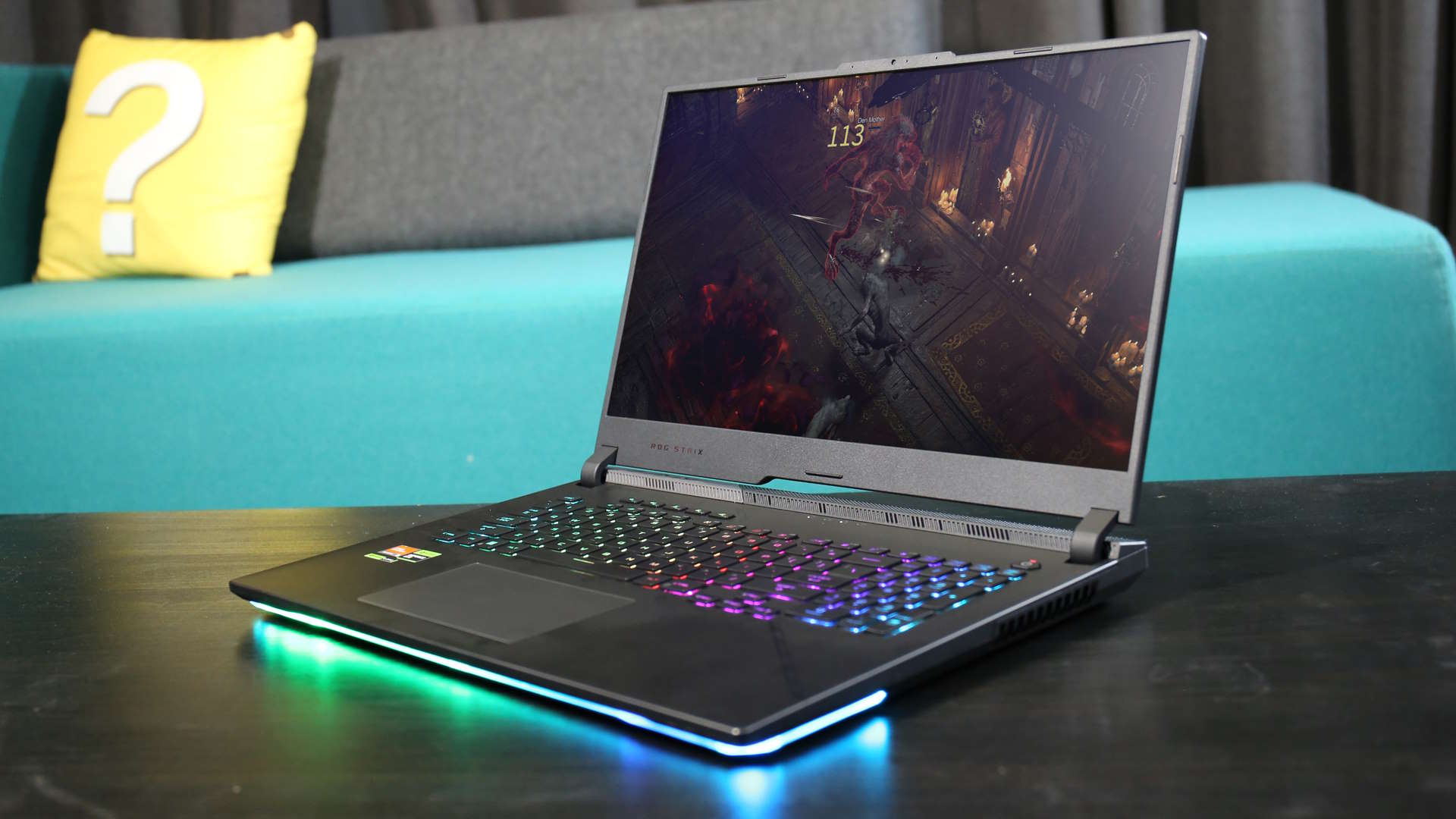
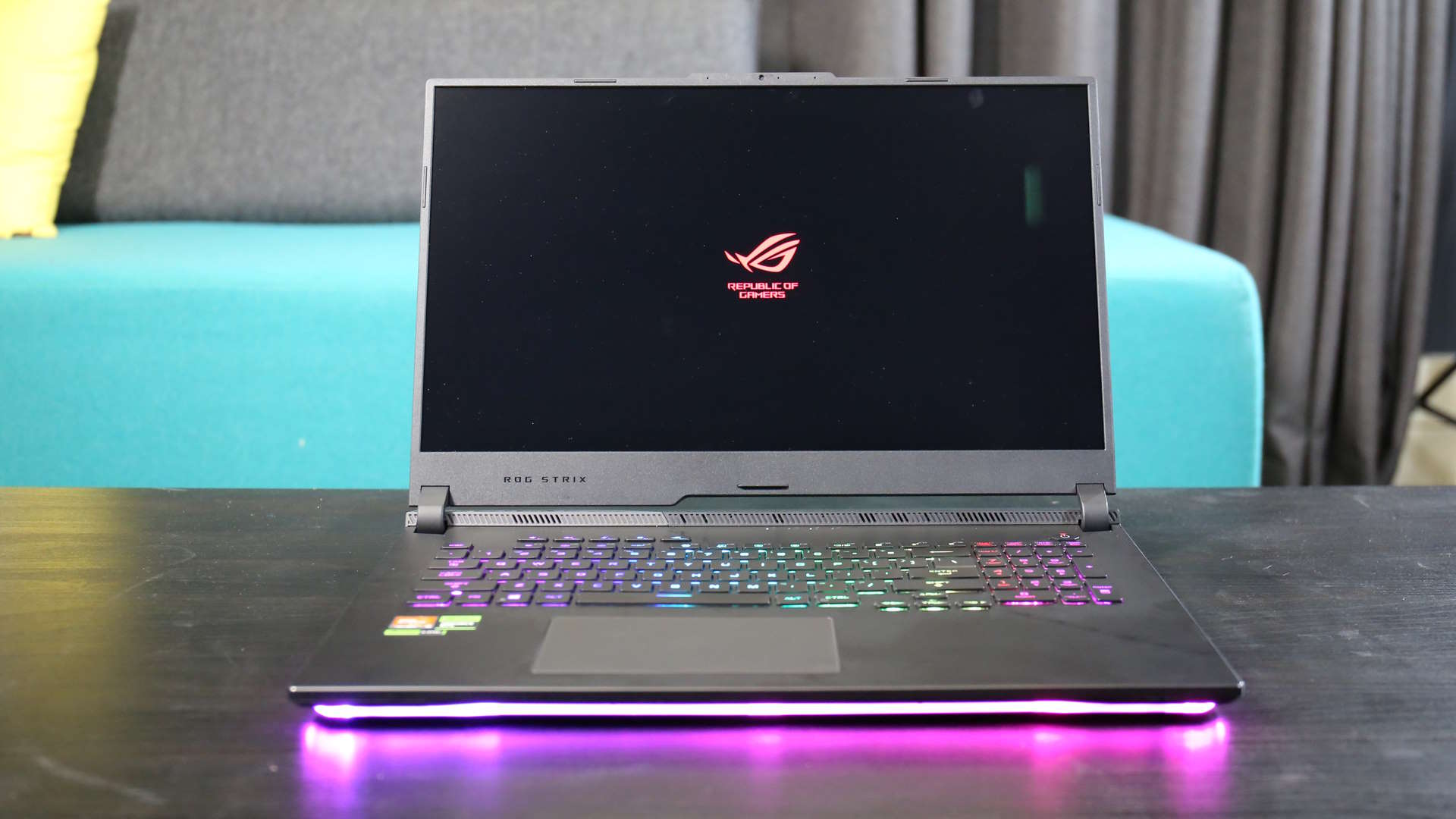
The key spec, as always in a gaming notebook, is that of the CPU/GPU combo. We've already spoken in great length about the mobile RTX 4090, decrying its misnaming as an RTX 4080 in a thin disguise, but the mobile AMD CPU is the big new thing here.
It's AMD's latest Zen 4 architecture brought into the laptop realm and it's pretty damned special, hosing the competing Intel 13th Gen chips used in comparative systems. Sometimes by a long way. It's a 16-core, 32-thread processing monster that so far hasn't burned up inside the confines of this surprisingly slight chassis.
The nominal clock speed of the chip is just 2.5GHz, with a boost clock of 5.4GHz. And that's actually a reliable boost, too, because I was reliably seeing the chip ramping up to that level during single-core loads in my testing. In heavily multithreaded loads I was seeing a regular 4.7GHz, which is no mean feat. I repeat, we are talking about 16 full Zen 4 CPU cores here.
The most powerful Intel mobile chip we've seen has been the Core i9 13980HX in the Asus Strix Scar 16, this machine's smaller sibling. That's a 24-core processor with 32-threads, but remember Intel is mixing eight of its Performance cores with 16 Efficient cores to hit its thread target. And that shows in the CPU benchmarks.
System performance
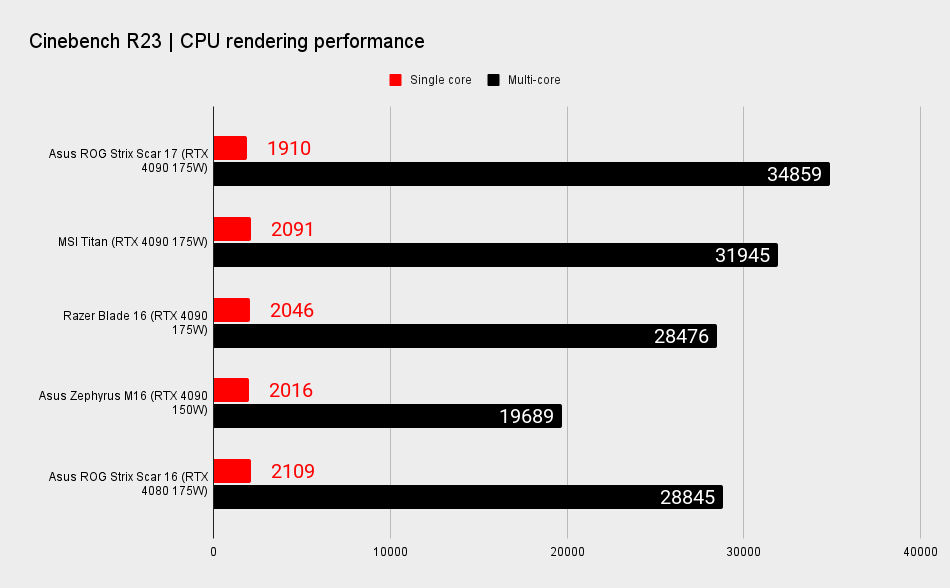
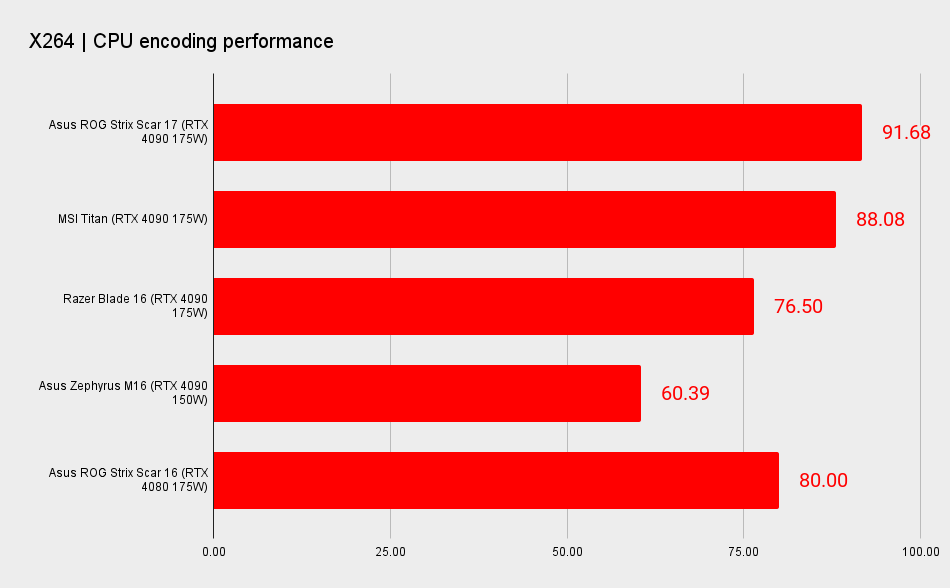
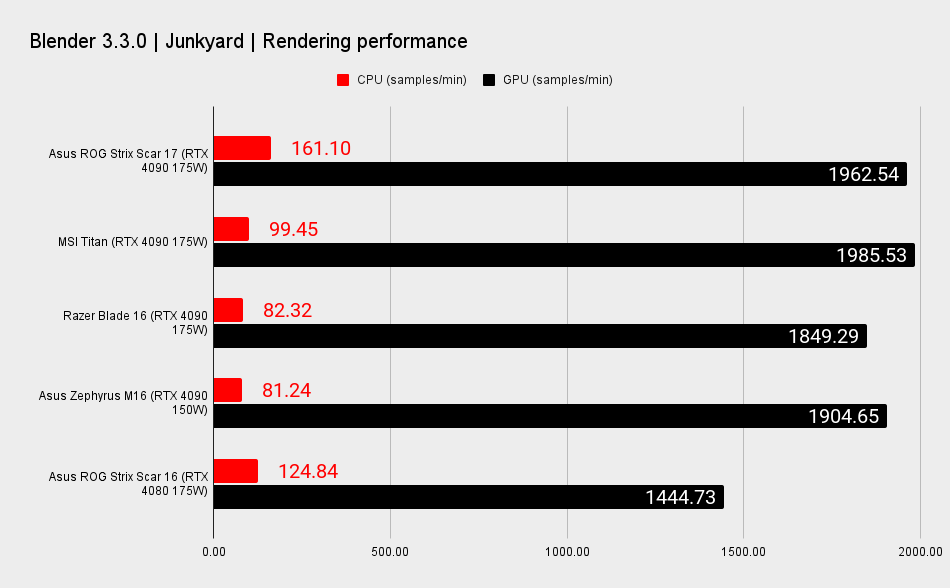
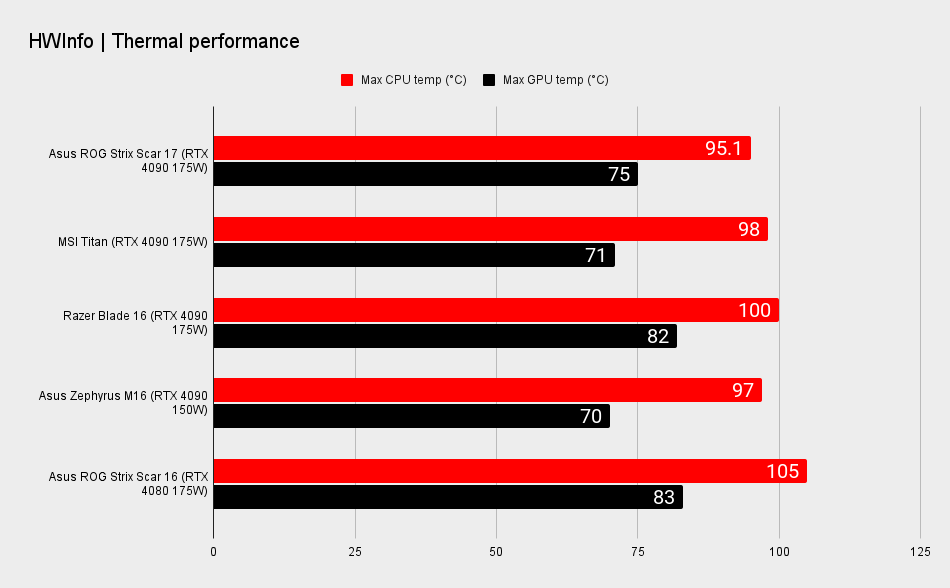
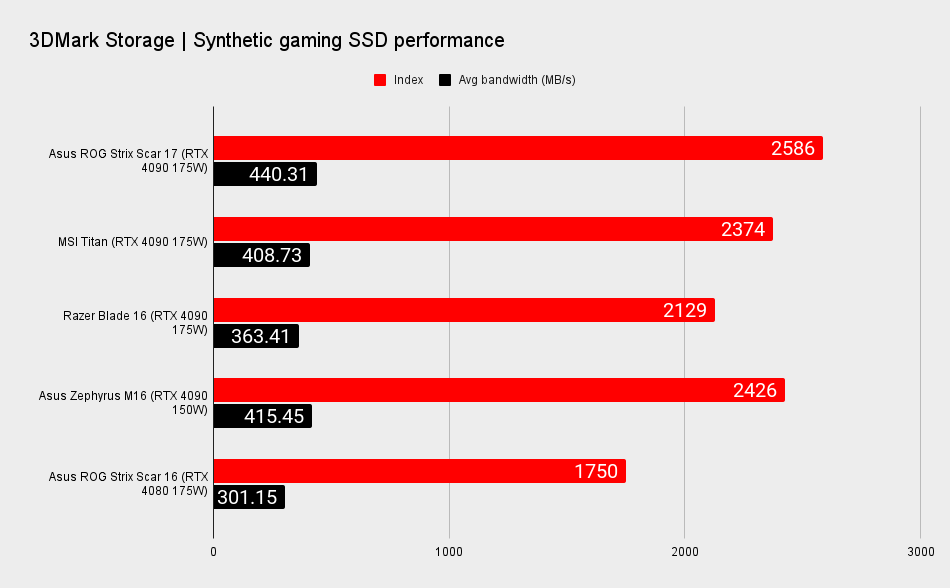
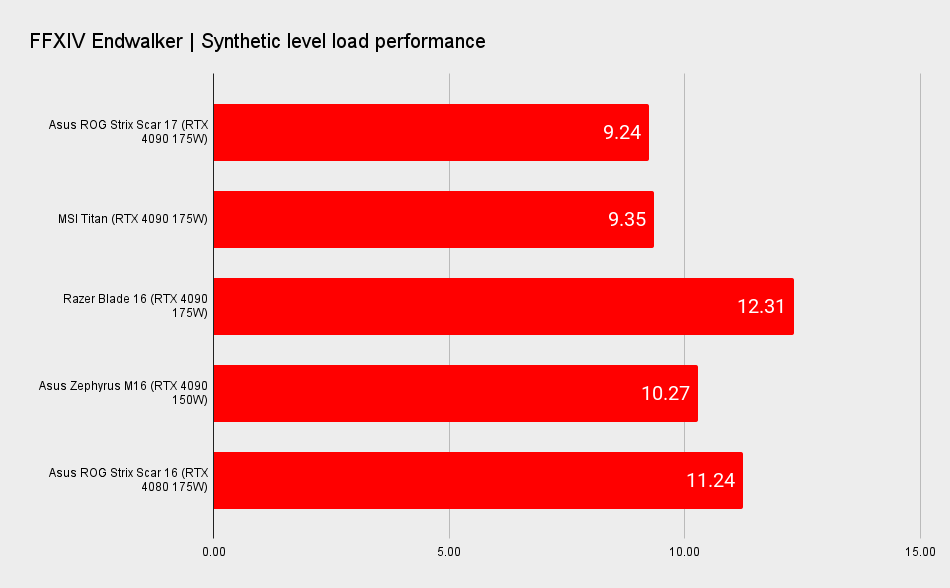
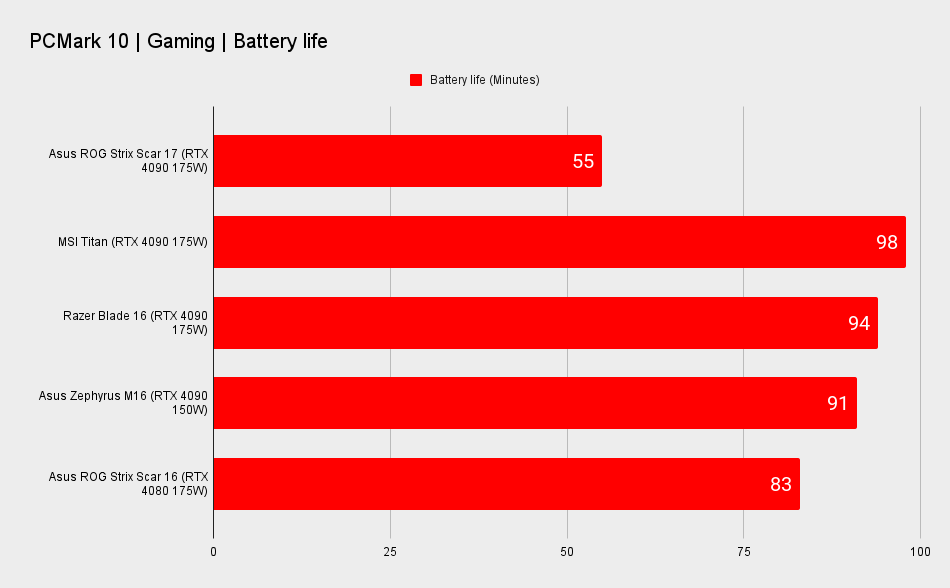
But it also sometimes shows up in some of the gaming numbers, too, where the Nvidia graphics card is at times more ably supported by the AMD processor. That's not normally the situation we've been used to—outside of the likes of the Ryzen 7 7800X3D on the desktop—but there are a good few instances where the 175W RTX 4090 in the Scar 17 outperforms the same GPU in almost any other machine.
Gaming performance
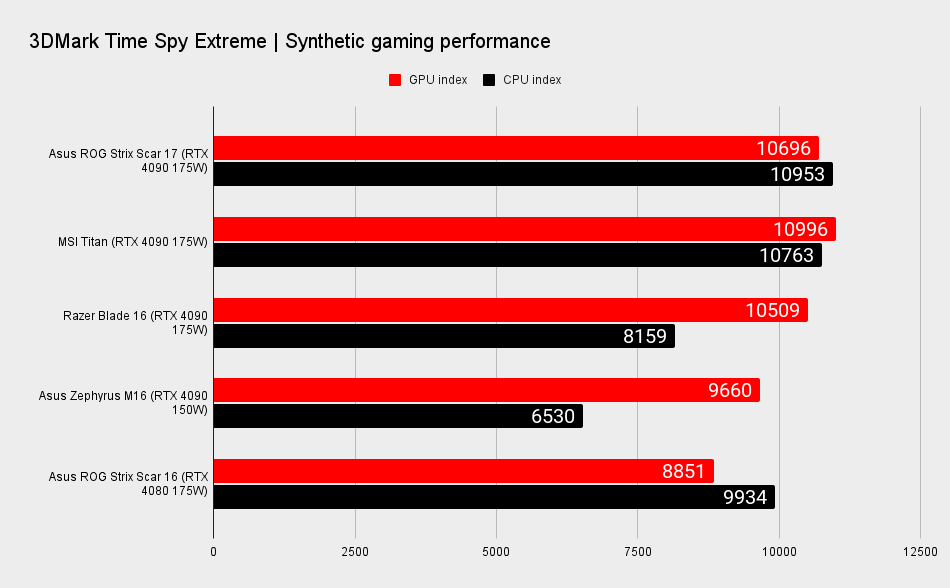
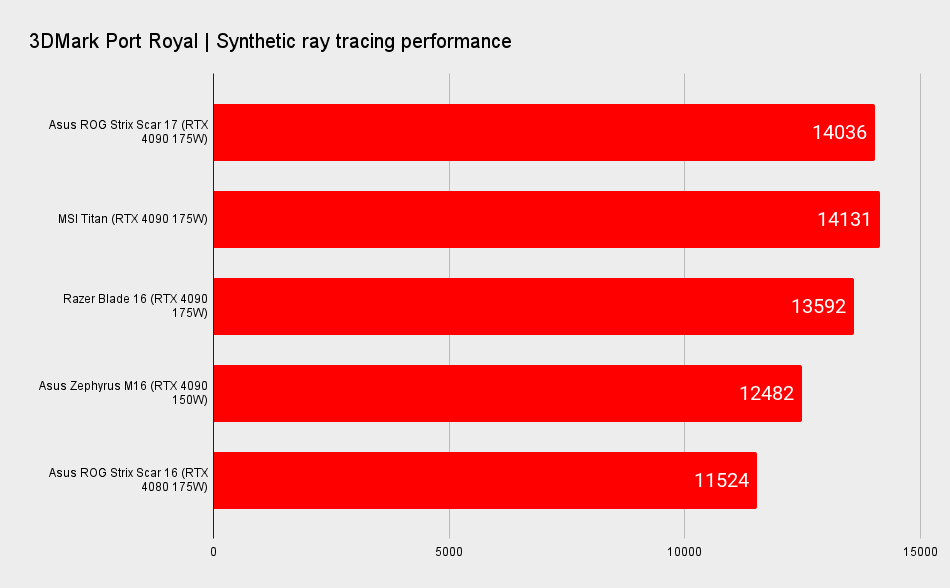
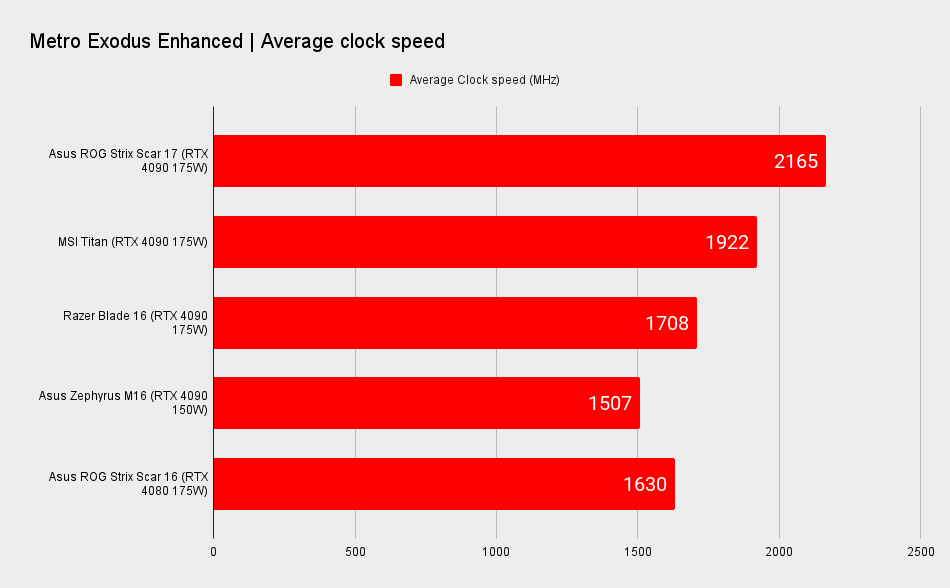
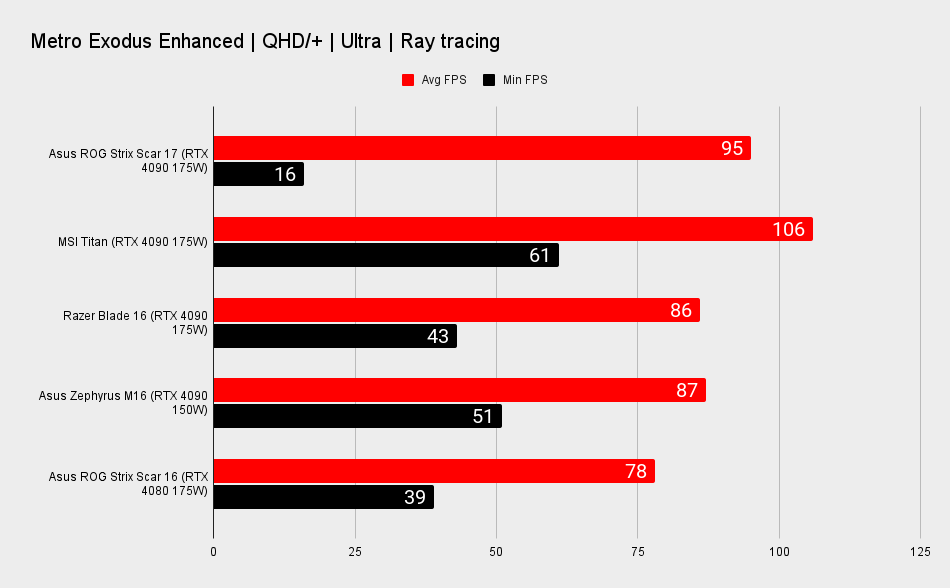
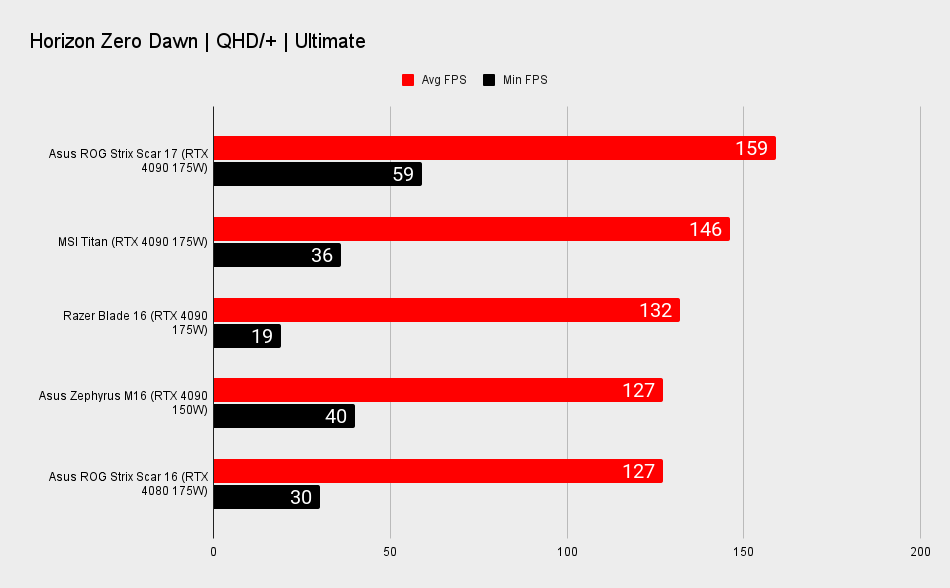
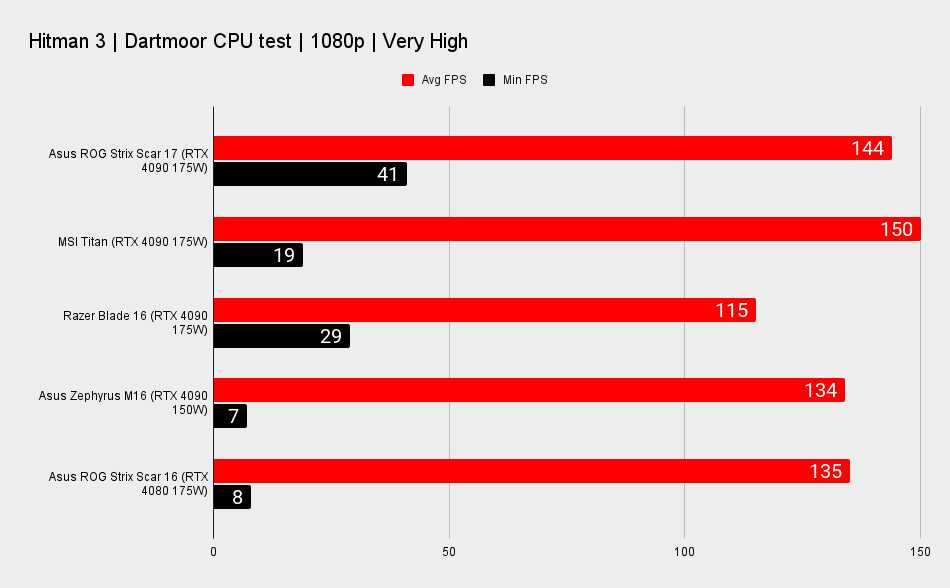
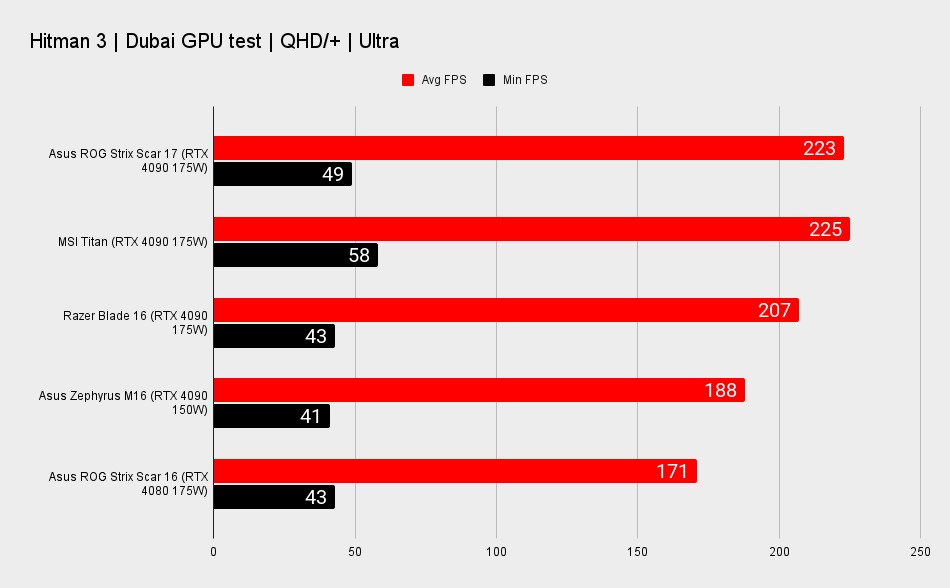
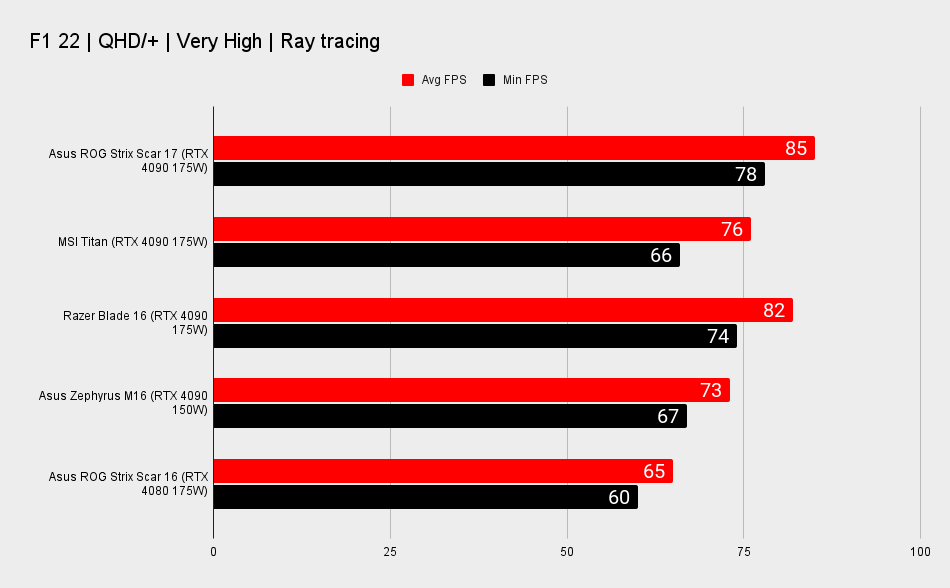
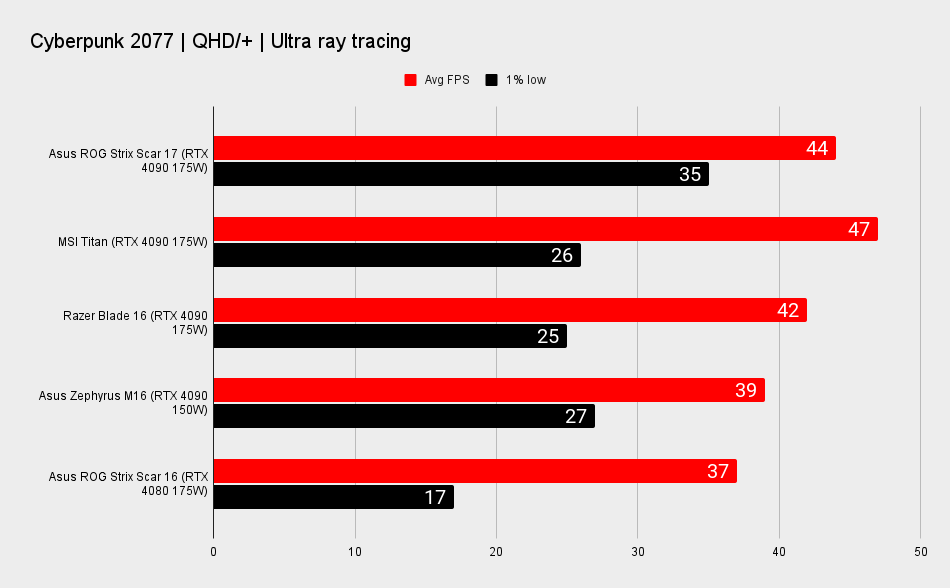
The majority of the time, however, the extra space inside the monster MSI Titan gives it a performance edge, but I never want to set my eyes on that machine ever again.
So yeah, thanks to AMD's new Dragon Range Zen 4 processors, this is the most powerful gaming laptop I've ever tested that I could actually put up with, but I can't say it's the laptop I'd really want to have myself. Stellar processing silicon is not the whole picture of performance notebooks, though stellar the new AMD chip most certainly is.
Ergonomics are still really important, and how it feels to actually use the machine day-to-day will have a huge impact on how much you enjoy the experience of your machine. In such a crowded market, that's where a laptop can really differentiate itself.
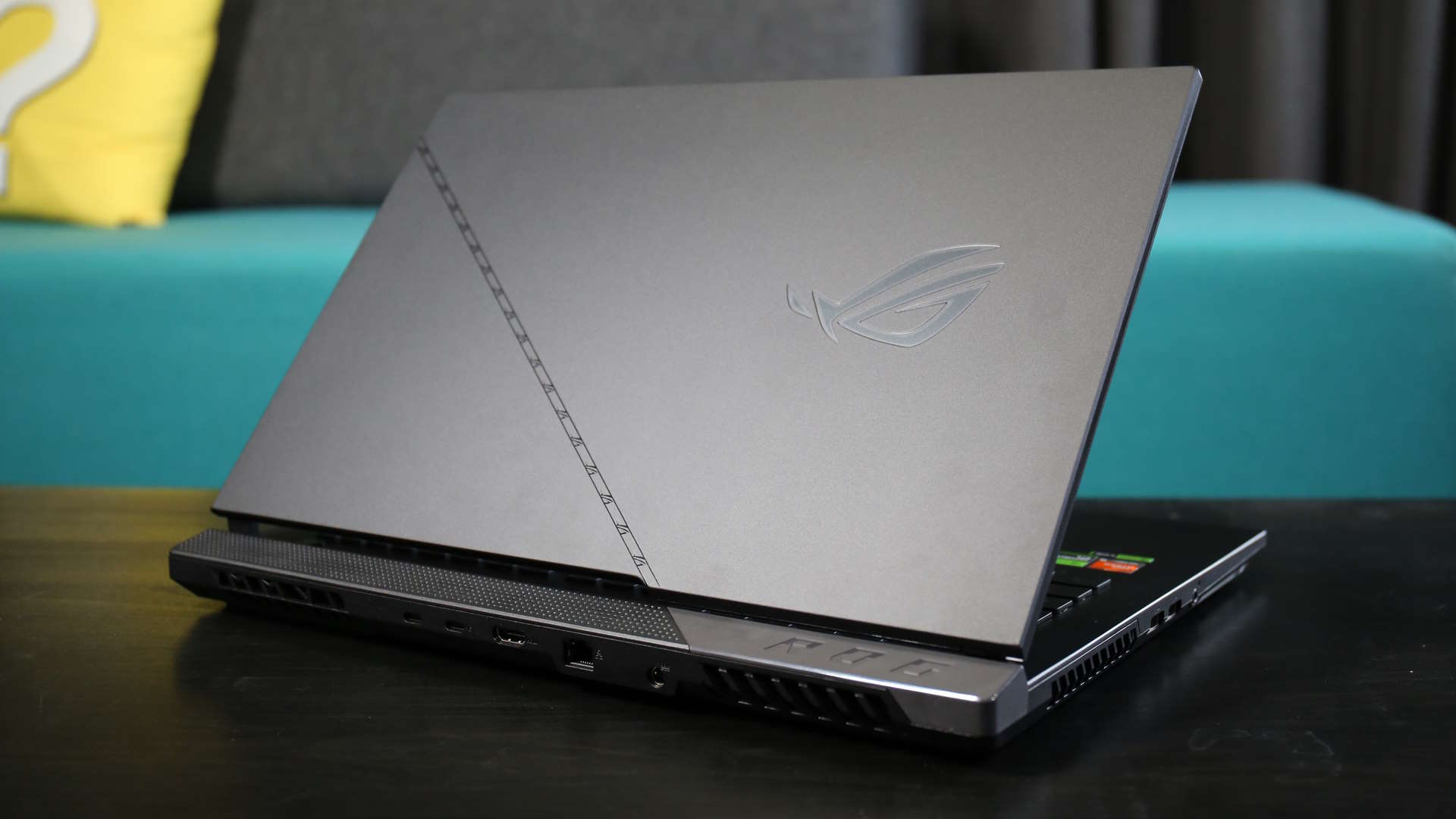
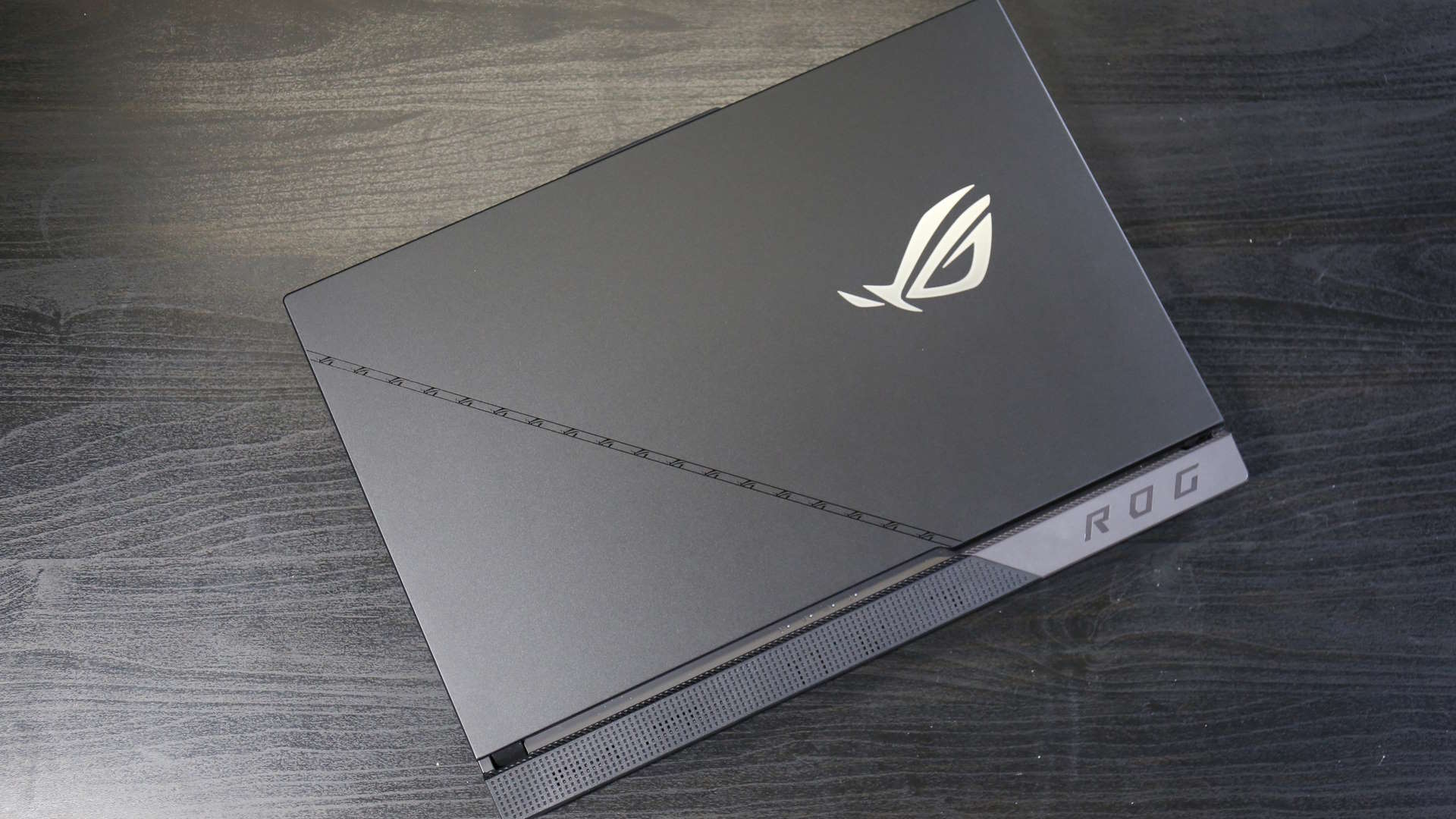
The big screen is a bit of a disappointment to me having gotten used to the gorgeous Nebula Displays Asus has jammed into its other laptops, though maybe that would have jacked up the price prohibitively. The 1440p panel isn't bad, it's responsive and has a 240Hz refresh rate, too, but it doesn't feel particularly bright or vibrant either on the desktop or in game.
I can forgive that if it keeps the price down. What I find harder to forgive is that near a thousand words into writing this review and my forearms really are getting sore now. The defined edge at the front of the laptop, while not as sharp as on the Blade chassis, is really digging in now.
And, oh boy, that trackpad has been really getting to me. It flits between too responsive and not responsive enough. I'm trying to use a two-finger scroll to get around a web page or document and it's constantly registering a press as the actuation is so damned light.
It does like to make itself heard, too. I'm not talking about its speakers, which are fine as laptop drivers go, but about the noise of the system's cooling array. It's effective, with the CPU staying well below the mark the competing Intel chips are hitting. But it sure is loud doing it.
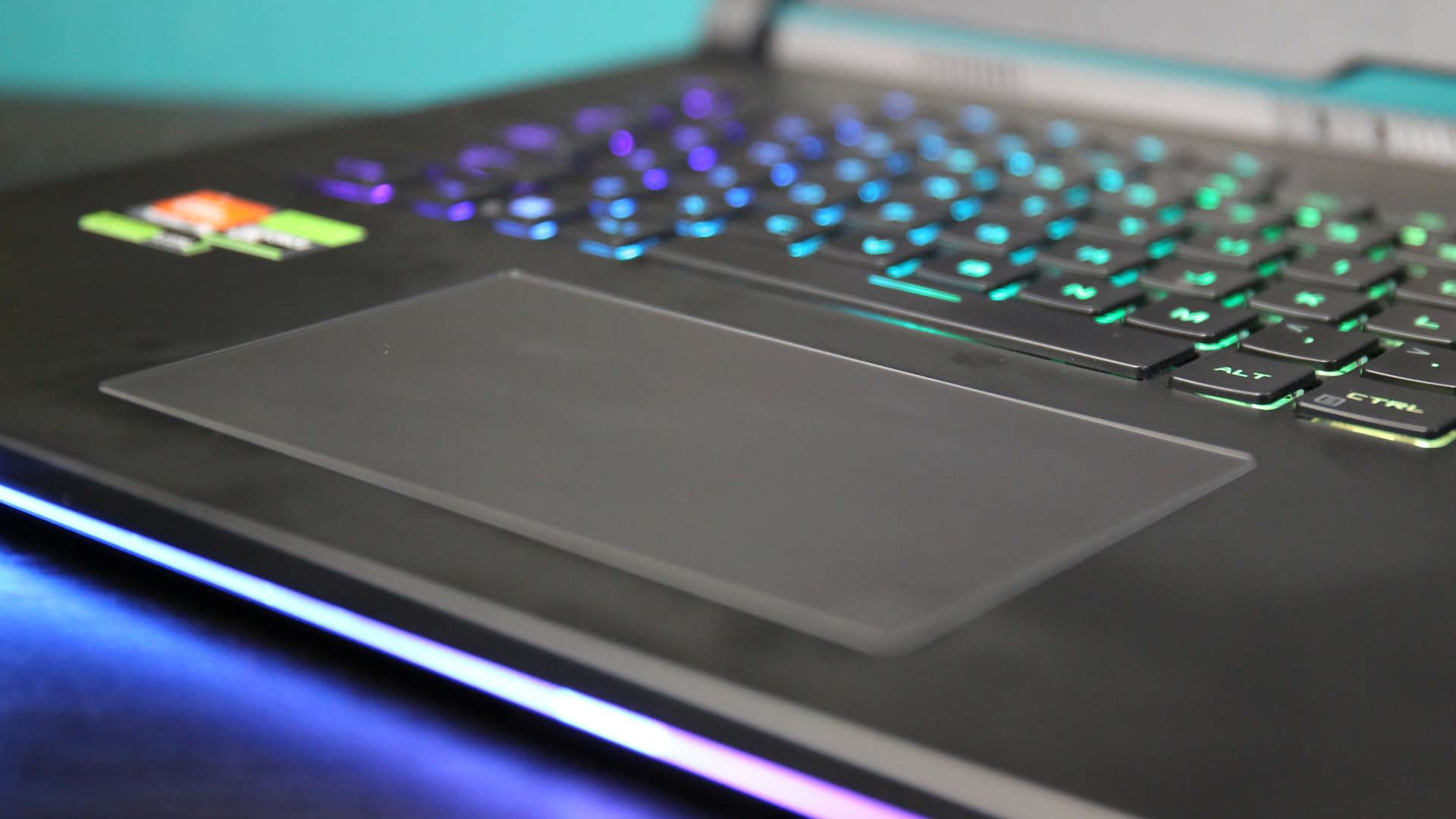
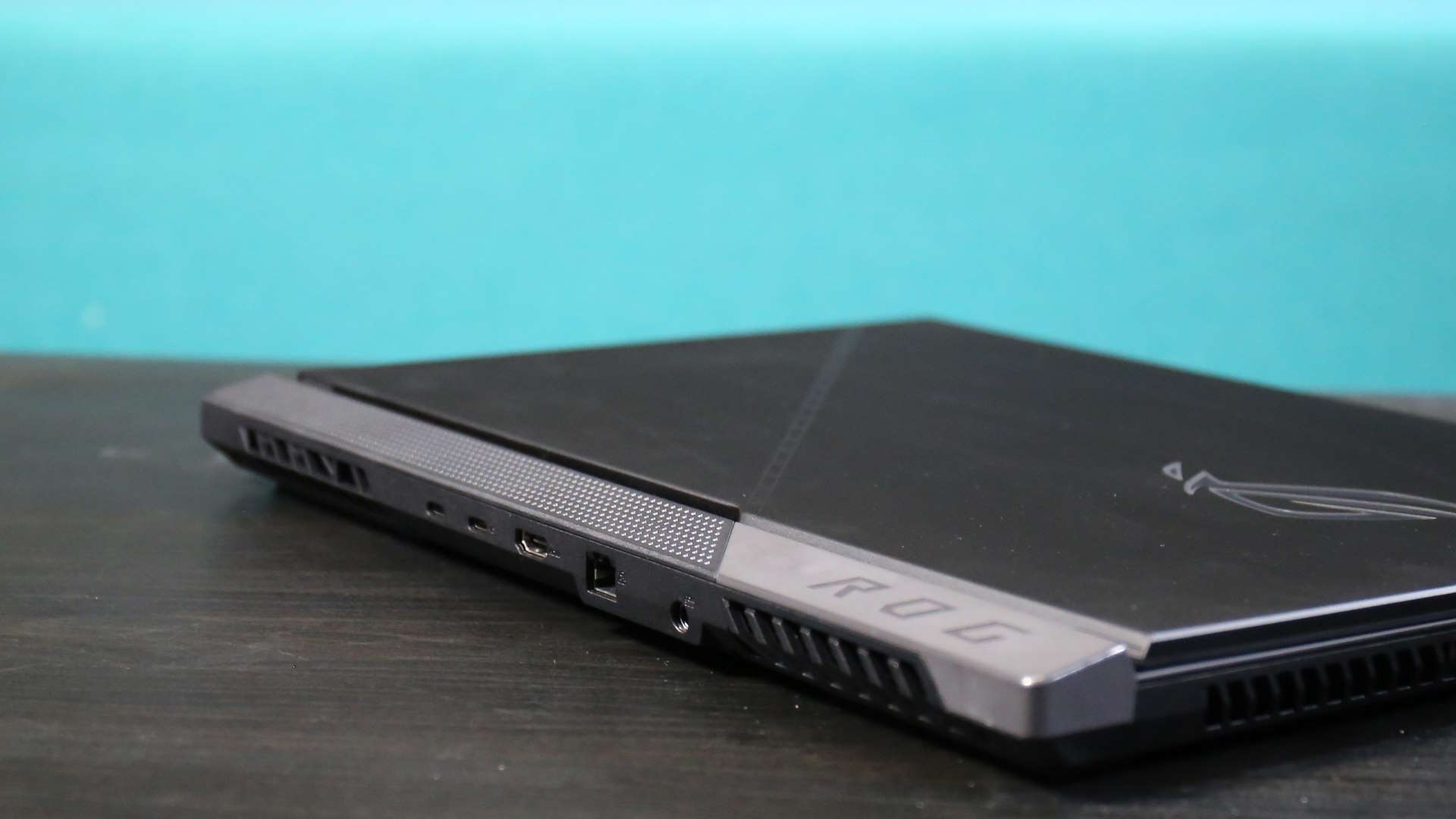
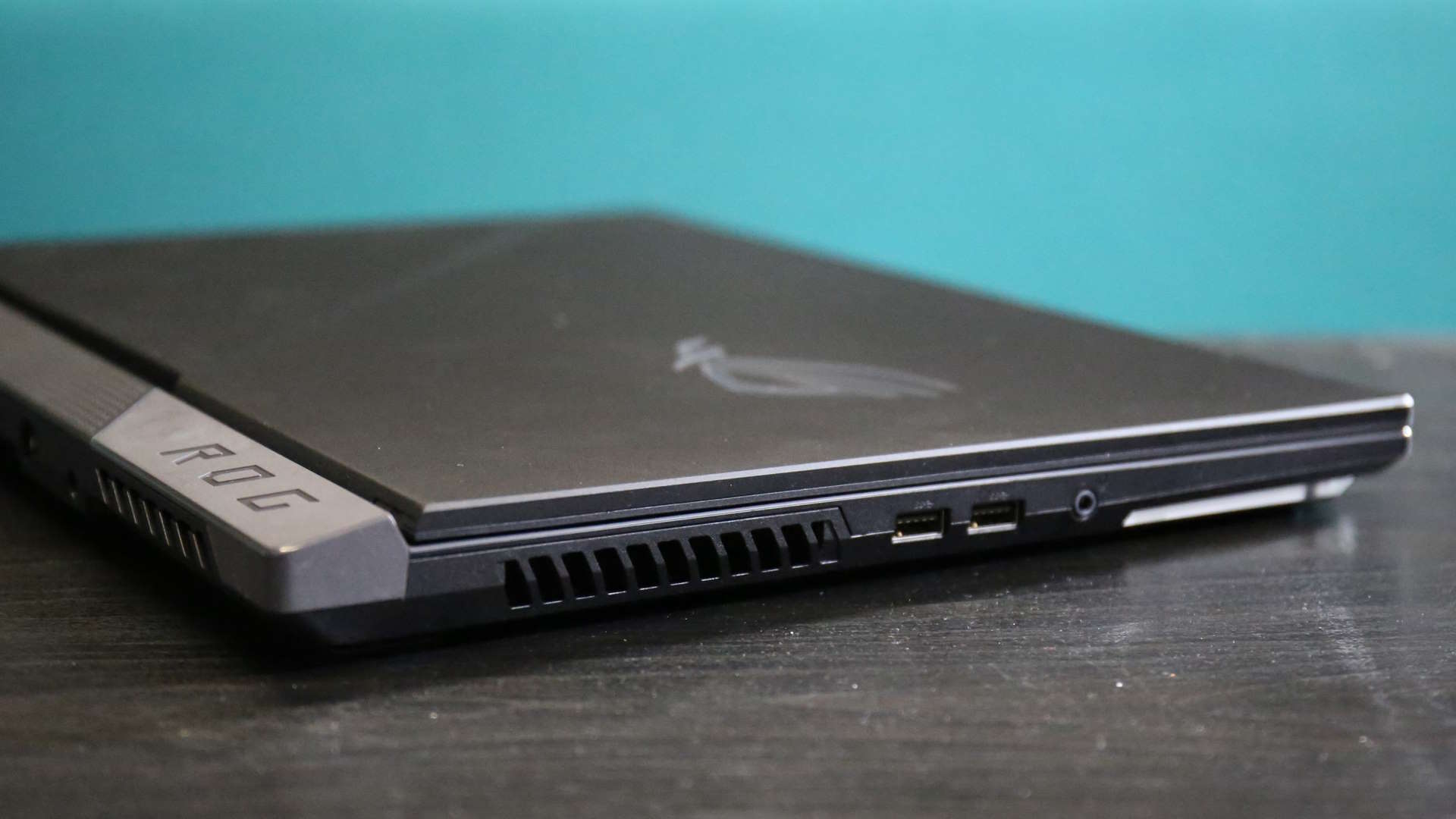
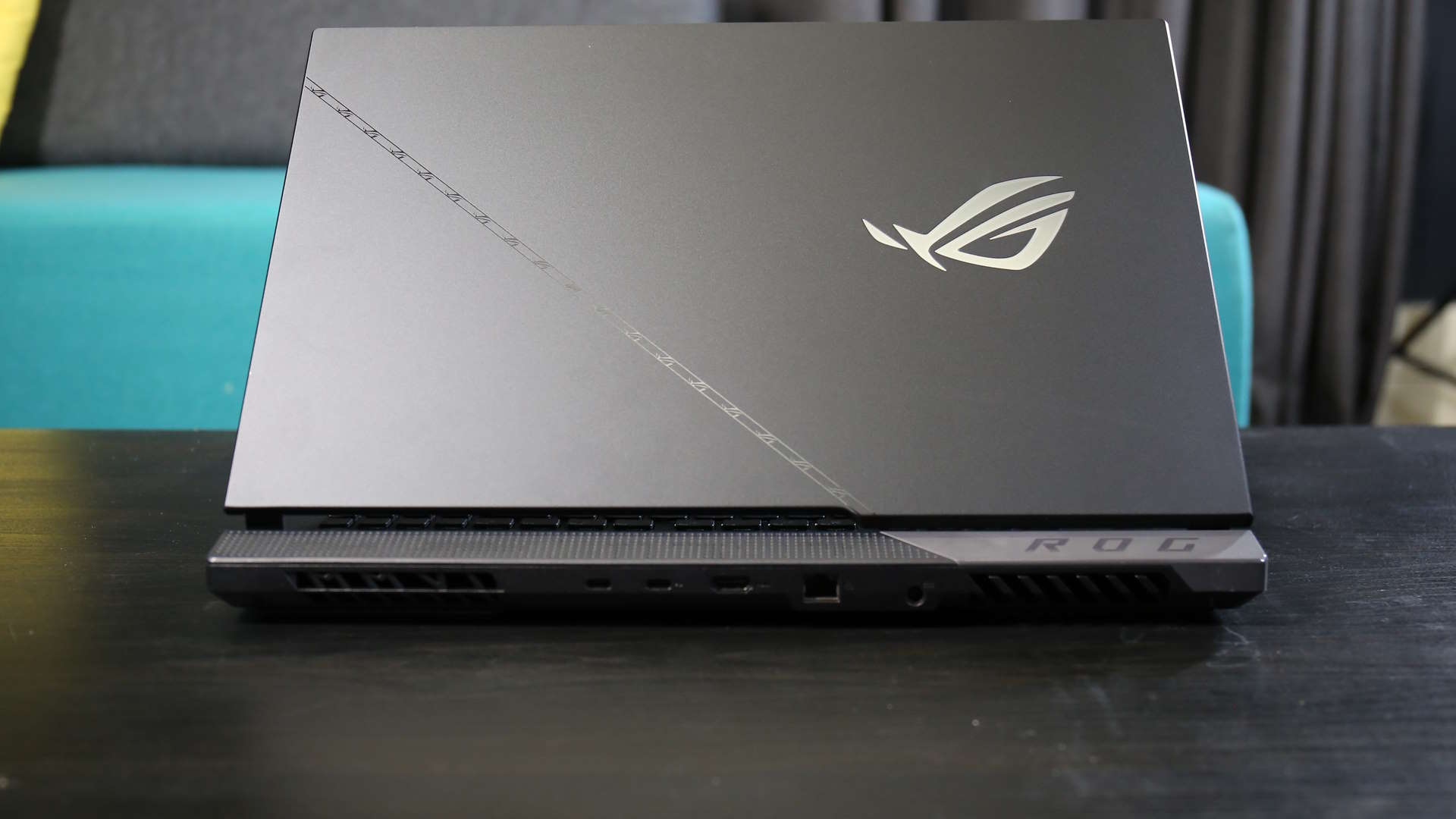
✅ You want the most powerful gaming laptop: The combination of AMD's latest Ryzen mobile chip and Nvidia's RTX 4090 makes this a real frame rate spitting monster of machine.
✅ You want a desktop replacement: The large 17-inch screen and 1440p resolution gives you a lot of space to work on without taking up the same space as a full desktop+monitor setup.
❌ You want good battery life: at just 55 minutes in gaming terms, the battery life is among the worst I've ever tested.
❌ Ergonomics is key to you: the typing experience isn't great with such a defined chassis edge that digs into your forearms, and the trackpad is horrible.
❌ You like a quiet life: it gets LOUD.
It's not just when you're thrashing it with some render task or game; the fans will spin up super loud when it's just downloading something or trying to figure out just when to interrupt you with a Windows Update restart. It's really distracting and utterly fails the patented Ridley Train Embarrassment test. I would not be comfortable sitting there in public with the Scar 17 whirring up. My European sensibilities would not allow it.
Still, I keep coming back to my irredeemably negative experience of using the MSI Titan machine. That's an offensively chonky, loud machine that still only just delivers the sort of performance this Asus Scar 17 can. And that means as much as the ergonomics of this big boi ROG laptop don't sing to me, the raw performance absolutely does.
It's also my first taste of AMD's new range of laptop processors, and it's certainly pleasing my techie palate. The red team is really nailing mobile chips at the moment, with the power of this Ryzen 9 7945HX and the efficiency and performance of its Z1 Extreme, née Ryzen 7 7840U, that is gracing the excellent ROG Ally handheld gaming PC.
All that has me jonesing to get my hands on the Asus Zephyrus G14 with the AMD chip inside it. Because while the price and performance of the Scar 17 is a little intoxicating, and sits it right at the top of the mobile tech tree, the actual experience of using it still leaves me a little tepid.
The Scar 17 is one of the fastest, most powerful gaming laptops I've ever tested. And if that's all you care about this is the machine for you. For me, the ergonomics make it feel like a second-tier system despite the fact it can outperform far more expensive gaming laptops. Asus giveth, and Asus taketh away.

Dave has been gaming since the days of Zaxxon and Lady Bug on the Colecovision, and code books for the Commodore Vic 20 (Death Race 2000!). He built his first gaming PC at the tender age of 16, and finally finished bug-fixing the Cyrix-based system around a year later. When he dropped it out of the window. He first started writing for Official PlayStation Magazine and Xbox World many decades ago, then moved onto PC Format full-time, then PC Gamer, TechRadar, and T3 among others. Now he's back, writing about the nightmarish graphics card market, CPUs with more cores than sense, gaming laptops hotter than the sun, and SSDs more capacious than a Cybertruck.
